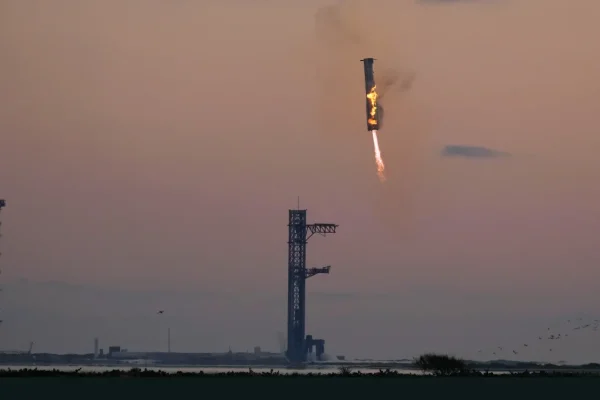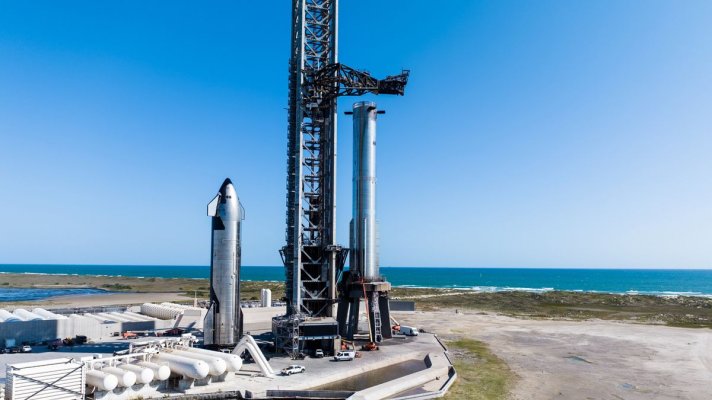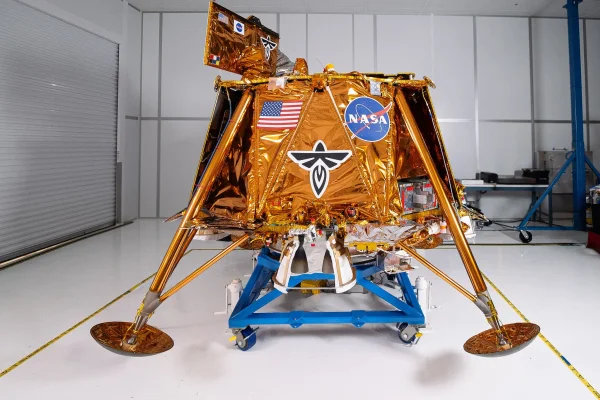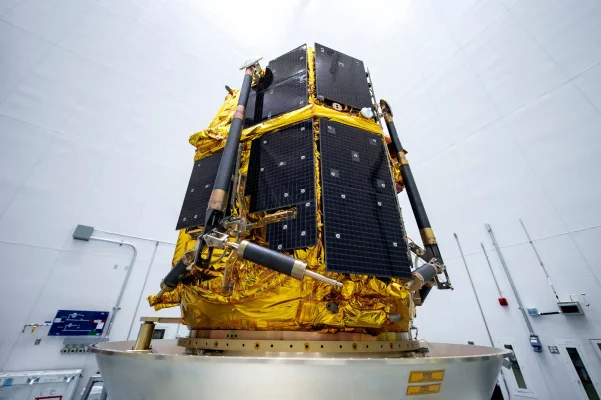Turns out it was the ground computer, not the vehicle. 

Follow along with the video below to see how to install our site as a web app on your home screen.
Note: This feature may not be available in some browsers.

Successful Starship Flight test 4 this morning. Truly amazing video from different angles. Best in full screen.
To skip the intro bs, start play at about 32 minutes. Video shows launch, thru booster separation, booster soft splash down, and Starship engine cutoff to orbit. Total about 44 minutes. Several ads; just go to bottom right and click skip.
Following the successful soft water landing on Flight 4, Elon has confirmed that it is now planned for Flight 5 to feature a Booster catch attempt using the launch tower "chopsticks" which are used to first stack the Starship for launch. Two animations below show the capabilities.
Tower catching the Super Heavy booster.
https://static.wikia.nocookie.net/s...Twitter.mp4/revision/latest?cb=20240407181926
Tower catching the Starship.


These are capabilities far in excess of what Boeing and Nasa possess, thanks to bad government.SpaceX successfully launched Starship Flight Test 5 this morning from it's Starbase facility in Boca Chica, Texas.
For the first time, this demonstration mission included an ambitious attempt to maneuver the 232-foot-tall (71-meter) rocket booster to a gargantuan landing structure after it burned through most of its fuel and broke away from the upper Starship spacecraft. The Super Heavy was successfully caught midair with a pair of massive metal pincers, which SpaceX calls “chopsticks.”
View attachment 126475
https://media.cnn.com/api/v1/loops/...ex-booster-chopsticks-catch-01.mp4?c=original
Landing rocket boosters after flight is a feat that SpaceX mastered with its smaller workhorse rocket, the Falcon 9. Boosters from that rocket have made soft touchdowns on seafaring platforms or ground pads after more than 330 launches — allowing those vehicles to be refurbished and flown again. SpaceX says that has driven down its costs, allowing the company to undercut the rest of the rocket market.

Live feed. They opted for a Gulf of Mexico splashdown for the booster. Starship is headed for an Indian Ocean splash down.


